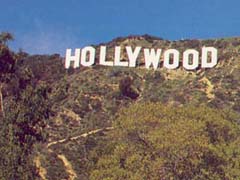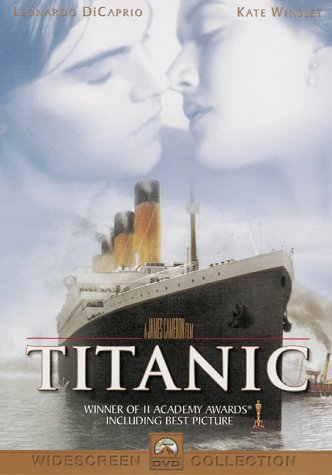Click
Here to return to the previous page
Paul Sparks
- Online English Lesson Plans, Lesson Material and Ideas for "Culture of
English Speaking Countries Lessons" for Xiangtan Normal University...
WESTERN CULTURE AND SOCIETY: THE UNITED STATES OF
AMERICA (USA) -
The American Movie Industry
THE AMERICAN MOVIE INDUSTRY:

-
Photo of Ronald
Reagan, who was a famous actor in the 1950's before becoming president
in the 1980's.
-
By the early 1920s,
Hollywood had become the world's film capital. It produced virtually all
films show in the United States and received 80 percent of the revenue
from films shown abroad. During the '20s, Hollywood attracted many of
Europe's most talented actors and actresses. By the end of the decade,
Hollywood claimed to be the nation's fifth largest industry, attracting
83 cents out of every dollar Americans spent on amusement.
-
During the 1920s,
movie attendance was very high. By the middle of the decade, 50 million
people a week went to the movies - the equivalent of half the nation's
population.
-
The theaters which
were used by the middle class were quite different. Late in the new
century's first decade, theaters in downtown or middle class
neighborhoods became increasingly luxurious. At first many of these
theaters were designed in the same styles as many other public
buildings.
-
The film industry
changed radically after World War II, and this change altered the style
and content of the films made in Hollywood. After experiencing boom
years from 1939 to 1946, the film industry began a long period of
decline. Within just seven years, attendance and box receipts fell to
half their 1946 levels. Families with babies tended to listen to the
radio rather than go to the movies; college students placed studying
before seeing the latest film; and newlyweds purchasing homes,
automobiles, appliances, and other commodities had less money to spend
on movies.

-
Then, too,
especially after 1950, television challenged and surpassed the movies as
America's most popular entertainment form. In 1940, there were just
3,785 TV sets in the United States. Two decades later, nine homes in
every ten had at least one TV set. For preceding Americans, clothing
styles, speech patterns, and even moral attitudes and political points
of view had been shaped by the movies.
-
Hollywood began
produced movies that explored disturbing changes in the lives of
American youth. Films such as The Wild One (1954), Blackboard Jungle
(1955), and Rebel Without a Cause (1955) portrayed adolescents as
criminals.
-
As the 1960s began,
the movie industry grew quickly. Among the most popular films at the
start of the decade were Doris Day romantic comedies like That Touch of
Mink (1962) and epic blockbusters like The Longest Day (1962), Lawrence
of Arabia (1962), and Cleopatra (1963).
-
By the early 1960s,
an estimated 80 percent of the film-going population was between the
ages of 16 and 25. At first, the major studios largely ignored this
audience, leaving it the hands of smaller studios like American
International Pictures. Two films released in 1967--Bonnie and Clyde and
The Graduate--awoke Hollywood to the size and influence of the youth
audience. Bonnie and Clyde, the story of two depression era bank
robbers, was advertised with the slogan: "They're young, they're in
love, they kill people." Inspired by such French New Wave pictures
as Breathless (1960), the film aroused intense controversy for
romanticizing gangsters and transforming them into social rebels. A
celebration of youthful rebellion also appeared in The Graduate, which
was the third-highest grossing film up until this time. In this film, a
young college graduate rejects a hypocritical society and the
traditional values of his parents--and the promise of a career in
"plastics"--and finds salvation in love.

-
The most popular
films of the late 1970s and early 1980s were escapist blockbusters like
Star Wars (1977), Superman (1978), and Raiders of the Lost Ark (1981)--
featuring spectacular special effects, action, and simplistic conflicts
between good and evil--inspirational tales of the indomitable human
spirit, like Rocky (1976).
-
Many of the major
studios were acquired by large media and entertainment corporations,
like Sony, which purchased Columbia Pictures, Time Warner, and Rupert
Murdoch, whose holdings include HarperCollins publishers, the Fox
television network, and Twentieth Century Fox. At the same time that
these large entertainment conglomerates arose, many smaller independent
producers like Lorimar and De Laurentiis, disappeared.
-
Hollywood Today has
increased the amount of family entertainment it offers, including
feature-length cartoons like Aladdin and Beauty and the Beast; family
comedies, like Honey I Shrunk the Kids; and positive portrayals of the
teaching profession, like Dead Poet's Society and Stand and Deliver.
-
Many Americans worry
about Hollywood's future, complaining that "they don't make movies
like they used to." A basic problem facing today's Hollywood is the
rapidly rising cost of making and marketing a movie: an average of $40
million today. The immense cost of producing movies has led the studios
to seek guaranteed hits: blockbuster loaded with high-tech special
effects, sequels, and remakes of earlier movies, foreign films, and even
old TV shows.
-
Founded in 1912,
Universal Studios is the oldest continuously operating film company in
the United States and one of the oldest studios in the world. Over the
years, Universal has gone through many changes, from a family operation
in its early days to a multi-media conglomerate today, incorporating
many facets of the entertainment industry, including motion pictures,
television, music, theme parks, and live entertainment.
|